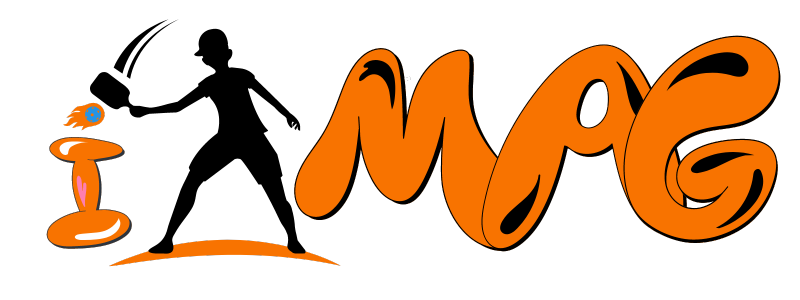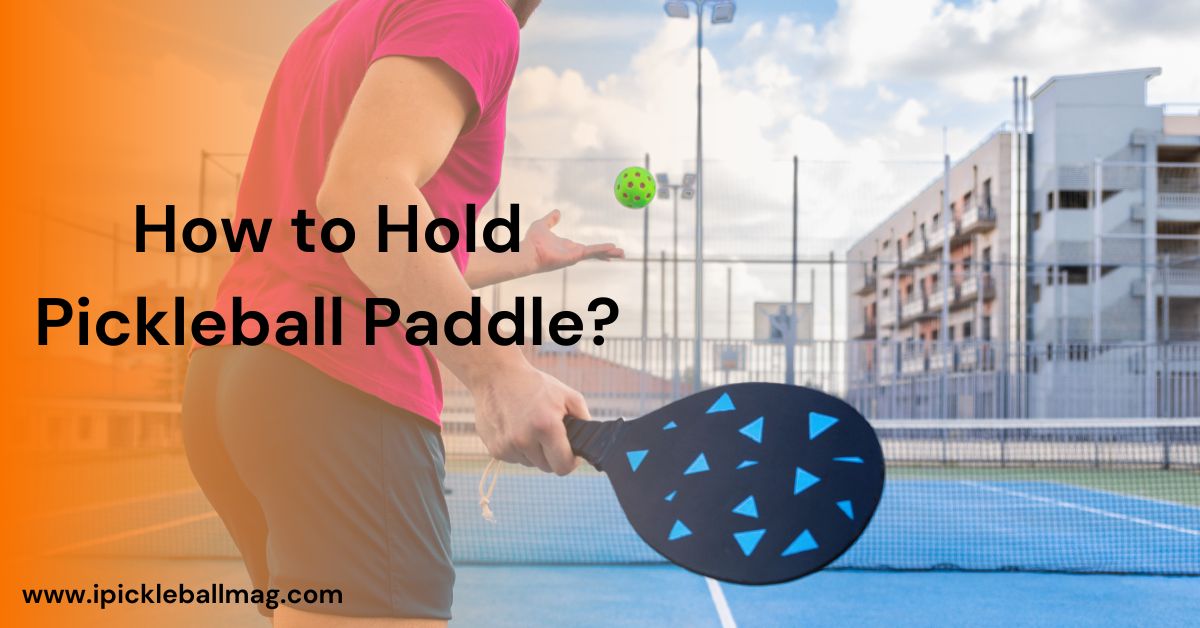How To Serve In Pickleball? Rules and Tips for Beginners
A good pickleball game can be ruined when the serve is weak or inconsistent. Once the serve is in play, even beginners can enjoy smashing balls back and forth in fun rallies.
To serve in pickleball, stand behind the baseline with both feet behind the line. With one hand, hold the paddle, and with the other, hold the ball. Drop the ball and strike it with the paddle before it touches the ground. This is called an underhand serve. Overhand serves are not allowed In Pickleball, and they are considered Fault.
The serve must travel diagonally across the court to the opposite service box and clear the net without hitting it. Always Aim to hit the ball deep into the service box to make it harder for your opponent to return.
How to Serve in Pickleball – The Two Main Types of Serves
It’s important to understand the pickleball serving rules before diving into techniques for better serves.
The Volley Serve
The traditional volley serve is hitting the ball before it bounces. This style involves tossing the ball and striking it in an upward arc as it descends below waist height. A professional can serve at speeds over 70 mph once they master it. However, it takes practice to nail the proper technique and contact point.
A deep serve, targeting the opponents’ backhands, can limit their options for a third shot and push them back on their side of the court, making the return of serve more difficult.
The Drop Serve
With a drop serve, you simply drop the ball from any height and let it bounce once before hitting. This removes the strict rules of the volley. While it may be easier for beginners to learn, generating strength can be tougher from the lower contact point. However, you have more freedom to add spin and tricky placements. The drop serve must land in the diagonally opposite service court.
Comparing the Two
Both styles offer benefits depending on skill level and match goals. Beginners may find the drop serve easier, allowing power if the volley is perfected.
Top 5 Key Serving Rules You Must Follow
| 1. Your serve must land diagonally across the court in the service court. |
| 2. All serve must be hit underhand. Overhand serves are faults. |
| 3. When you contact the ball, at least one foot must be completely behind the baseline. The other can’t touch the court on or inside the baseline. |
| 4. Your arm must move continuously in an upward arc when it strikes the ball. No pauses or downward motions. |
| 5. You get two chances per serve turn. However, each chance only allows for one attempt to hit the ball. |
The scoring system in pickleball uses three numbers: the serving team’s score, followed by the opponent’s score, followed by either 1 or 2, indicating the first or second server after the side out.
Following these rules is necessary to avoid faults and score points!
Common Pickleball Serving faults
Let’s Discuss some of The Common Pickleball Serving faults
1. Foot Faults
A common type of fault is a ‘service foot fault.’ When serving, the server must ensure at least one foot is in contact with the ground (no jumping allowed).
The feet must stay within the imaginary extensions of the sideline and centerline and behind the court’s baseline. Your feet must not touch the baseline. Violating any of these conditions results in a fault.
2. Ball Not Clearing the Net
For a serve to be valid, the ball must clear the net without touching it and land in the correct service area. If the ball hits the net or fails to clear it entirely, it is a fault.
3. Illegal Serve Position
The serve must originate from within the correct service area and be directed to the diagonally opposite service court, considering the non-volley zone and its line. Serving from an incorrect position or failing to serve diagonally results in a fault.
4. Ball Hitting Non-Playable Area
The ball must land within the opponent’s service court and not in the non-volley zone (kitchen) on the serve. If the ball lands in the non-volley zone, it is a fault.
5. Delay of Serve
The serve must be executed within 10 seconds of the referee’s signal in officiated games. It is considered a fault if the server is delayed beyond this time.
Common Pickleball Receiving Faults
After discussing pickleball serving faults, let’s also explore common receivable faults.
1. Stepping into the Non-Volley Zone
When returning the serve, the receiver must not step into the non-volley zone (kitchen) and volley the ball. The ball must bounce once before it can be volleyed if the player is standing inside the non-volley zone. Failing to let the ball bounce before hitting it from within this zone results in a fault.
2. Double Bounce Fault
The receiver must ensure that the ball is returned before it bounces a second time on their side. If the ball bounces twice before being hit, it is considered a fault.
3. Early Return
In pickleball, there is a rule called the Double bounce rule that requires the receiver to allow the ball to bounce once before returning it. Volleying without letting it bounce first is a fault.
Easy Tips for Improving Your Pickleball Serve
Now let’s get into some easy ways you can improve your serve
Start with the Drop Serve
If you’re new to pickleball, begin practicing with the drop serve. This is often easier to learn initially.
Since the ball can bounce first, you can take your time setting up the serve. Once you can reliably get your drop serves in play, move on to the volley serve.
Focus on Consistency First
When first learning to serve, the main goal is simply getting the ball safely into the service court. Don’t worry about power or placement. Just focus on consistency.
Becoming comfortable with the serving motion is important before attempting advanced serves. Throw the ball high enough if you want to execute proper technique.
You can begin aiming your serves and adding power as your consistency improves. The first step should be simple.
Pay Attention to Paddle Angle
Having the correct paddle angle when you contact the ball is key for serving success.
When serving topspin in pickleball, tilt your pickleball paddle back slightly. By doing so, the ball will rotate forward, bringing it down into the court.
Keep your paddle vertical when serving backspin. By doing so, the ball can be prevented from spinning backward, which can cause it to sail long.
To see the effects of different paddle angles, practice serving at different angles.
Step Into the Court
Many beginners make serves while standing completely behind the baseline. This limits their power and control.
Instead, step into the court with your front foot as you serve. This allows your arm more room to swing and generate pace. It lets you contact the ball further out in front, enabling better placement.
Ensure your back foot doesn’t touch or cross the baseline, which would be a foot fault.
Mix-Up Serve Placement
Serving to the same spot repeatedly makes it easy for opponents to anticipate. Vary the placement of your serves instead:
You can use wide serves to pull opponents off the court in different directions and open up your return angles. Short and high-bouncing serves are a great way to confuse opponents. A deep serve, targeting the opponents’ backhands, can limit their options for a third shot and push them back on their side of the court, making the return of serve more difficult.
If your opponent is positioned wide, you should go down the middle to split them or exploit their weakness.
By mixing up your serves, you can keep your opponents guessing.
Add Spin to Your Serves
Besides placement, spin is another way to mix things up. Practice spinning the ball when you make contact during your serving motion.
Before moving on to trickier sidespins, start with easy topspins and backspins.
Drills to Practice Serving
Here are some simple solo and partner drills to ingrain proper technique:
Toss & Hit
Throw the ball high in front of you and let it bounce. During the bounce, execute your entire serving motion and make contact with the ball. Focus on solid technique on your pickleball serve instead of aiming, especially when attempting an underhand serve.
Repeat this drill continuously to develop muscle memory for the serving motion.
Target Practice
Set up something on the opposite court to aim at (e.g., cone, towel). Aim precisely for your target while serving ten balls in a row. For more practice, pick up the balls and change targets.
This engrains accuracy and consistency.
Serve & Switch with Partner
Start on opposite sides of the net. Serve two balls in a row diagonally across the court to your partner. As a part of the serving team, your partner lets the balls bounce and serves them back using their pickleball paddle. Continue rallying serves back and forth without stopping.
This builds serving rhythm and stamina. Practicing each serve attempt is crucial to ensure consistency and accuracy, as it helps you understand the rules and regulations related to serving in pickleball.
Frequently Asked Questions
Some of the most frequently asked questions about Pickleball serving are:
How Do I Know If My Pickleball Serve Is Legal?
Your serve must be an underhand stroke, with the paddle head below your wrist when it makes contact with the ball. At least one foot must be behind the baseline when serving, and the other can’t touch the court on or inside the baseline.
Your serving motion should be continuous with no pauses or downward arcs.
What Are The Two Main Types Of Pickleball Serves?
The two legal types of pickleball serve are the volley serve (hitting the ball out of the air without a bounce) and the drop serve (letting the ball bounce before hitting it). The volley serve is more common.
What Should I Focus On First When Learning To Serve In Pickleball?
When starting, focus first on consistently getting your serves safely in the service court rather than power or placement.
Toss the ball high enough to have time to execute proper technique. You can begin aiming your serves and adding power as your consistency improves.
How Do I Add Spin To My Pickleball Serves?
Tilting your paddle slightly at contact imparts topspin for serves that dip down quickly. Keeping your paddle vertical creates a backspin for floats that sail deep.
Lead with the paddle edge for tricky sidespin serves. Start slowly with topspin and backspin before attempting advanced sidespin.
What Drills Can I Do To Improve My Pickleball Serving?
Use the toss and hit drill on your pickleball court to ingrain the full pickleball serving motion and technique. Aim for targets in solo serving practice to build accuracy.
Rally cross-court serves back and forth with a partner without stopping to increase serving rhythm and stamina.
Conclusion – How To Serve In Pickleball?
As you have learned, developing a strong pickleball serve requires learning proper technique and applying it through consistent, focused practice.
Before trying advanced serves, it is better to start with the fundamentals, such as establishing a consistent toss, smooth paddle acceleration, correct contact point, and proper follow-through.
Once you’ve mastered the basics, you can mix more power, spin, placement, and variation to balance your opponents.
You can strengthen your overall pickleball game by regularly practicing the right fundamentals and tactics. We hope this guide answers your question about How To Serve In Pickleball.
Happy Serving on your pickleball court!!






